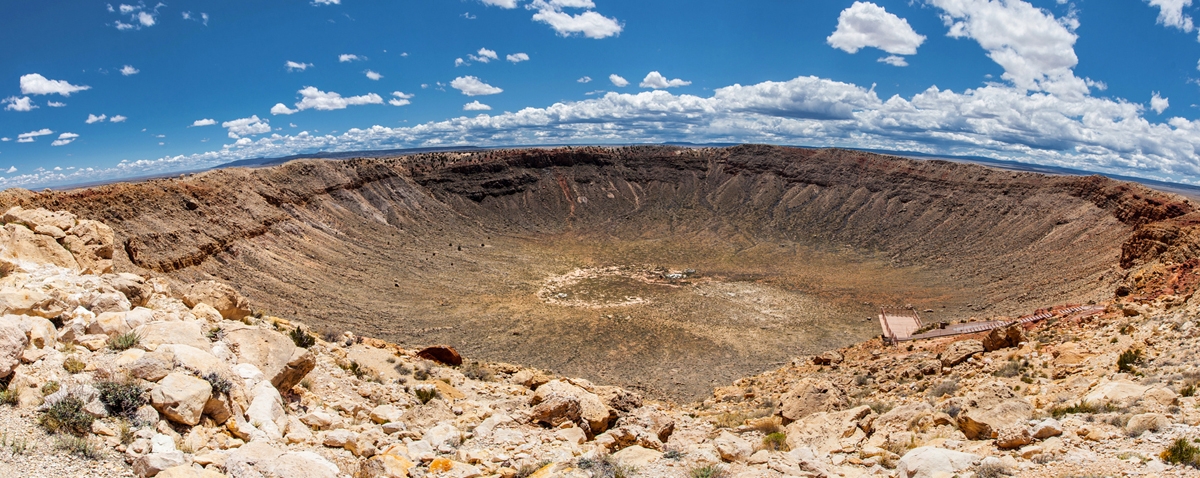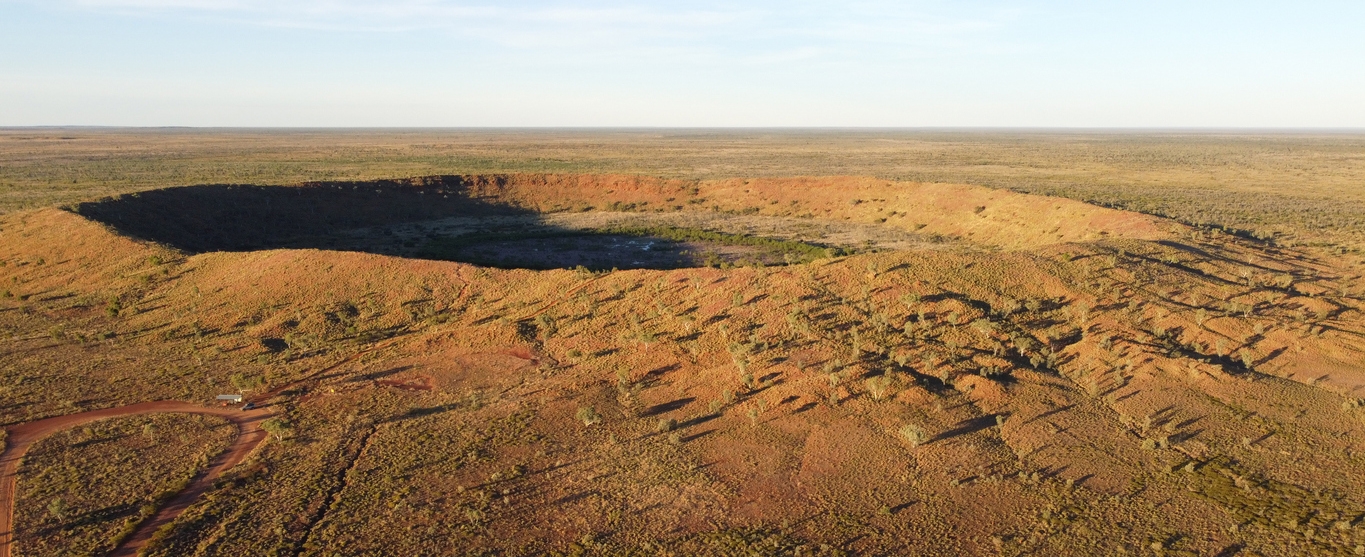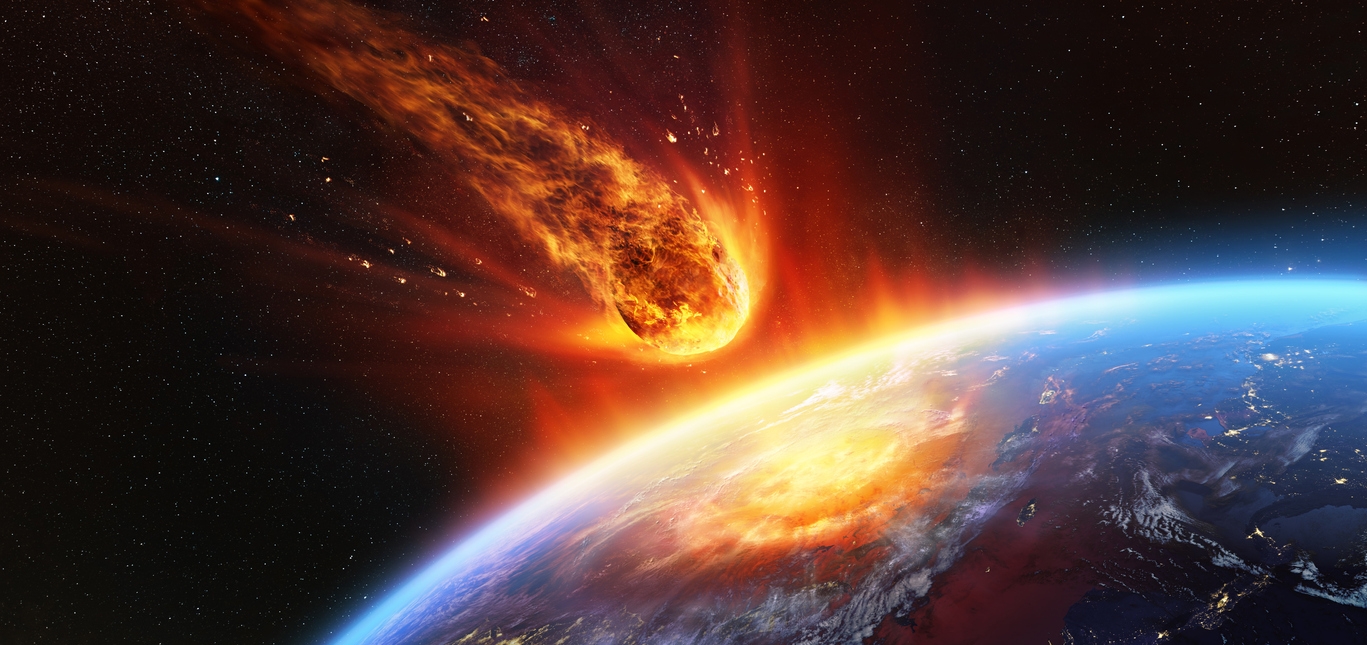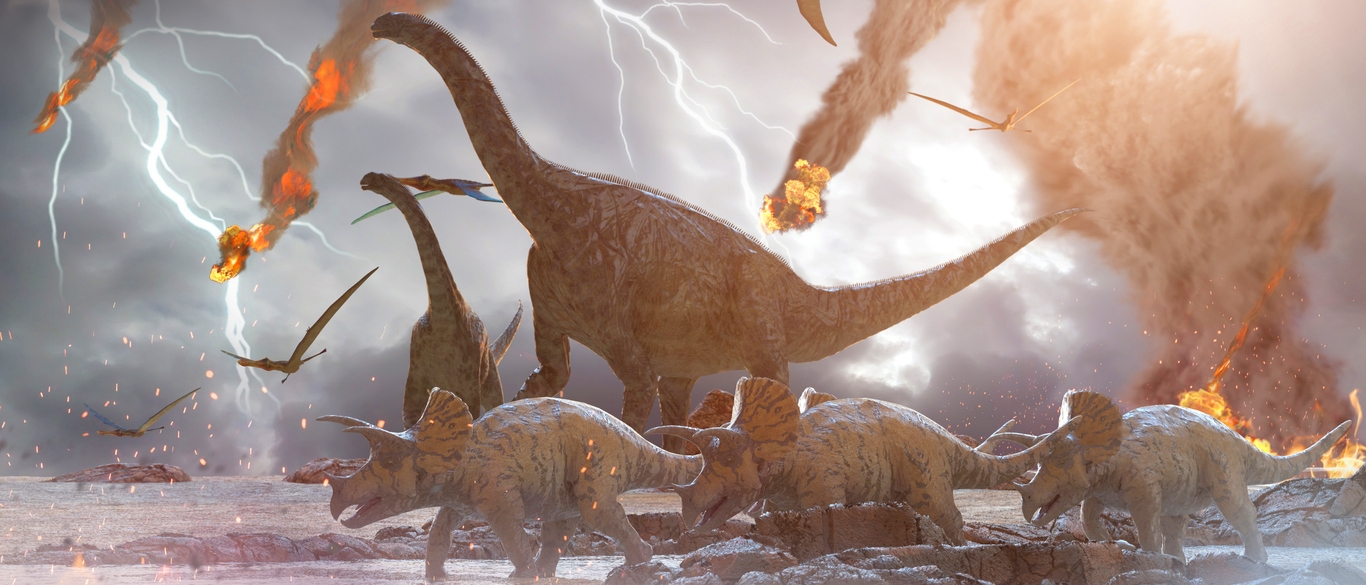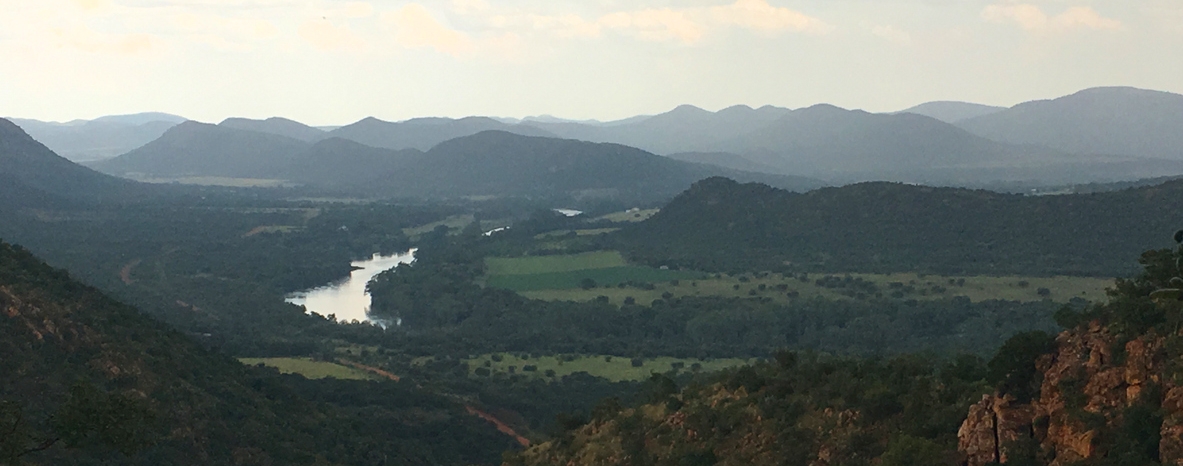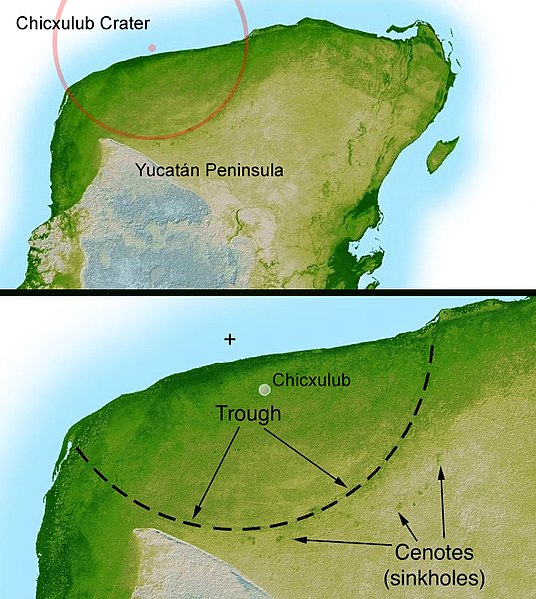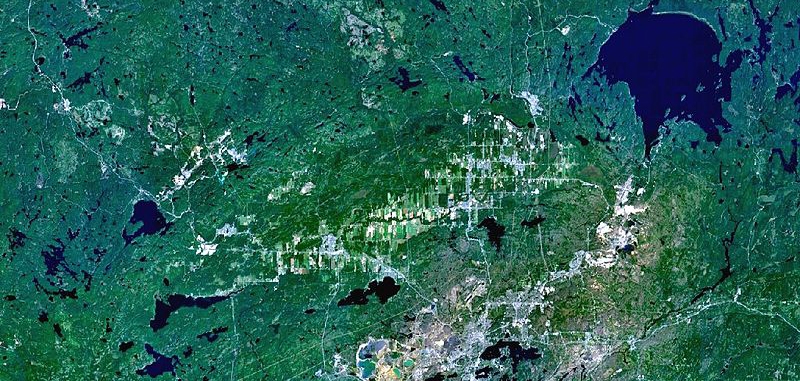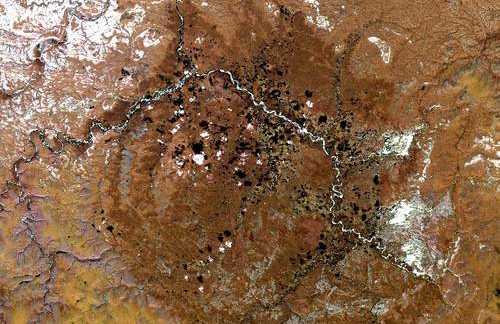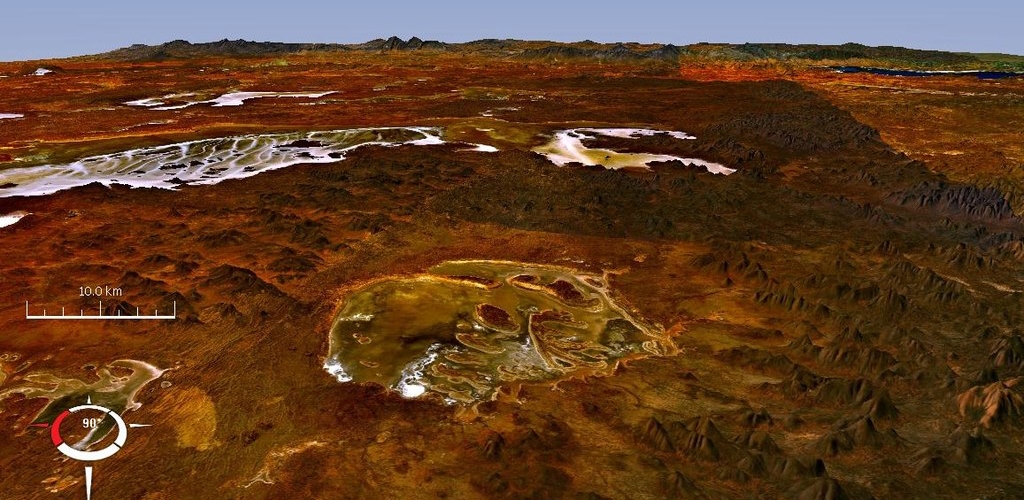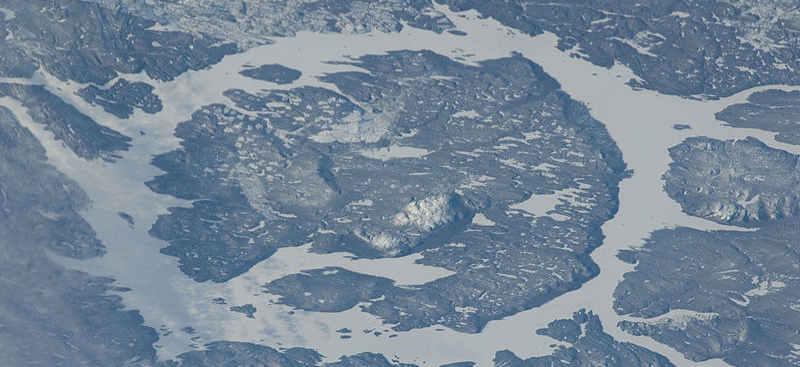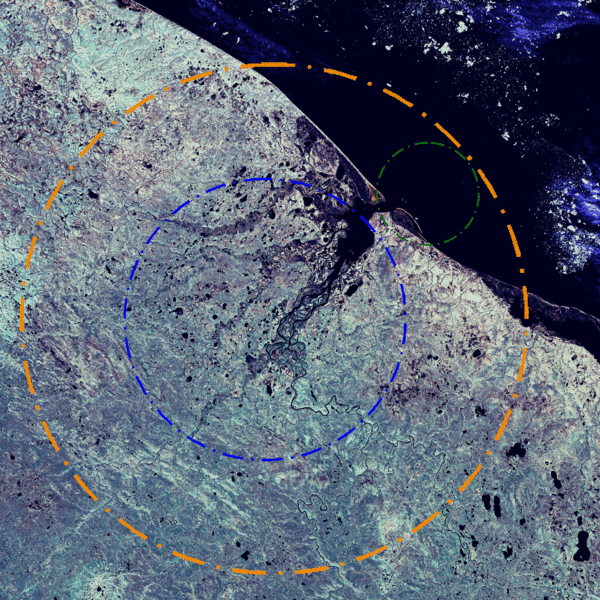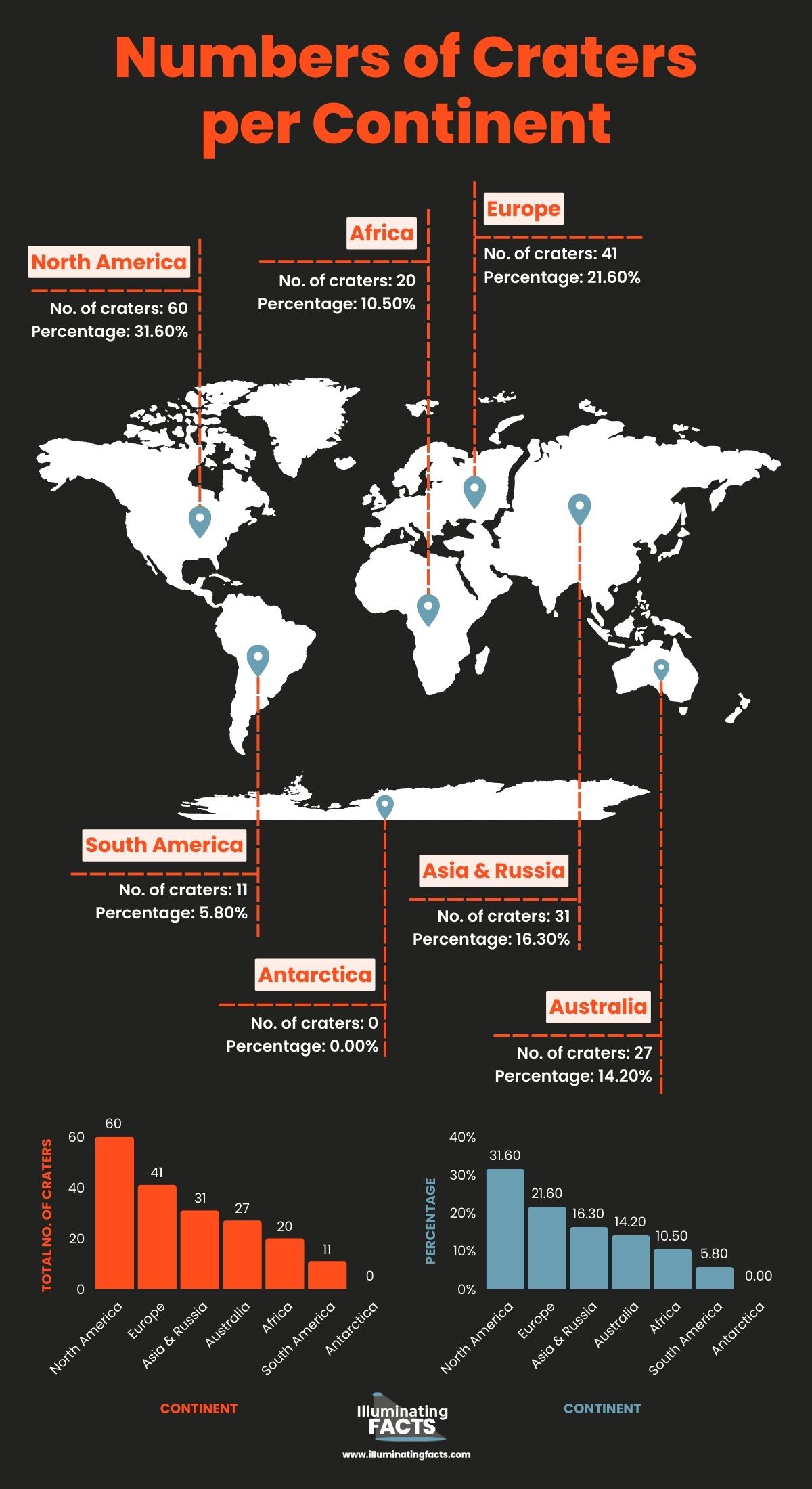Background
The universe is an incredibly big, scary place – filled with bolting comets and asteroids, large planets, gigantic stars, powerful black holes, and enormous quasars. While the layers of the atmosphere safeguard the Earth, giant rocks from space were able to whiz through that protective blanket and hit our planet’s surface. Such forceful impacts resulted in wide and deep holes that changed the topography of our planet and caused irreversible changes to the forms of life existing on Earth (talk about the dinosaurs!).
In this post, we’ll map out the world’s impact craters and discover what they are, their parts and types, their aftermath, the largest and oldest kinds, as well as the most interesting facts that you need to know about these cosmic souvenirs dotting Earth.
What is an Impact Crater?
Small solar system bodies (SSBs) like asteroids and comets continually speed through our solar system. Yet, there are instances when these SSSBs crash with larger solid bodies like the moon or the planets. Such collisions are regarded as impact events. They then result in impact craters or gaping holes on the surface of the receiving planetary body.
An asteroid or comet must be traveling at extremely fast speeds of around several thousand of miles per hour to have enough force to create an impact crater.
Though Earth has many impact craters, other planetary bodies like Mercury, Mars, Earth’s moon, and Jupiter’s moons (Ganymede and Callisto) have their own share of visible bombardments from meteoroids. The only difference is that Earth impact craters are continually erased or transformed by geologic processes over time. [1] [2] [3]
Types of Impact Craters
Objects from outer space hitting Earth may create specific types of craters:
Simple Craters
As the name implies, simple craters are the most basic type of craters. These craters are relatively small and have retained their bowl shape after the impact event. They are smooth-walled and have minor slumping. Some examples of simple craters include the Barringer Crater in Arizona and Canada’s New Quebec Crater.
Complex Craters
On the other hand, complex craters are larger craters with more intricate features. They can have several rings, wall terraces, and central peaks. Central peaks are usually formed by material underneath the crater uplifting upon the impact. The Gow crater in Saskatchewan, Canada, and the Mistastin Lake crater in Labrador, Canada, are examples of complex craters.
Impact Basins
Impact basins are incredibly large impact structures, having a diameter of more than 300 kilometers (185 miles). Earth’s moon has several impact basins. The largest among them has a whopping diameter of 2,500 kilometers (1,500 miles) and a depth of 12 kilometers (7 miles). These impact basins are the large dark areas we view from Earth. Mars and Mercury are other planetary bodies that have large impact basins caused by huge impactors that struck them. [2] [3] [4]
Parts of an Impact Crater
Every impact crater has its few common structures:
- Floor: The floor refers to the bottom of a crater, which can either be flat or bowl-shaped. It is usually deeper than the surrounding ground’s level.
- Walls: Walls are the craters’ interior sides. They are typically steep, though massive, stair-resembling areas may form over time as the walls collapse due to the force of gravity.
- Rim: The rim is the crater’s top edge. It is usually higher than the level of the surrounding ground. That occurs as ground material is normally pushed upward at the time of the impact.
- Central peaks: A peak is a higher area formed in the center of huge craters (usually having a diameter of a few tens of kilometers). Sometimes, the depression is so large that the material pushed towards the edge slumps back. Thus, sliding back to the center and creating the peak. Rocks beneath the crater may also bounce back up or rebound and add up to the mound.
- Ejecta: Rock materials are thrown outside the crater during the impact event. These objects are called ejecta and are scattered around the crater area. Debris can either be loose pieces or blankets, thicker close to the crater but thinner towards the outer regions.
- Rays: Comparable to the rays of the sun, rays are vibrant ejecta streaks that travel away from the crater, often at great distances. [2] [3]
Worst Abrupt Effects of an Asteroid Hitting Earth
As opposed to the dinosaurs, humans are pretty lucky to have an ample idea of what can occur should an asteroid hit the planet. A study published in the Geophysical Research Letter journal took all seven effects of impact events and ranked their severity on the basis of human lives lost. Computer-simulated models were used in the study to show the intense impacts on both land and sea and their ripping consequences on the planet. Here are the worst abrupt effects of an asteroid hitting Earth in order of less to the greatest lethality:
1. Seismic Shaking
With intense force from the impact event, Earth is expected to rumble, leading to rapid ground acceleration. It is estimated that seismic shaking will take a total of 0.17% of lives on the planet. While that may look like an insignificant amount, that accounts for 11 million people of the world’s 7-billion population.
2. Cratering
Also responsible for less than one percent, cratering caused by the impact will result in homes, buildings, and bridges being crushed or falling into giant pits. However, as this effect is due to a direct collision, the location of the impact must be in a populated city or region for it to result in major destruction.
3. Airborne Debris
Accounting to also less than one percent, flying debris (ejecta) has a reduced immediate effect on human lives. An example is a meteor that struck Chelyabinsk, Russia on February 15, 2013, where most of the injuries were caused by flying shattered glass from buildings.
4. Tsunami
If a large asteroid hits the ocean, it can trigger powerful tsunamis. However, its force will most likely dwindle as it travels and ultimately break as it encounters a continental. While it will take most of the human lives living in coastal communities, it is less than the number of resulting casualties should the same asteroid strike land. As such, it’s estimated that these giant tidal waves would only account for about 20 percent of total lives lost.
5. Thermal Radiation
An asteroid impact will generate thermal radiation that can roast humans to death or cause extremely horrible burns. Should an individual be able to survive such an ordeal, poisoning or cancer will most likely result from the radiation. Affected humans may experience less harm by hiding in underground structures or basements. Still, thermal radiation is anticipated to account for 30 percent of the total fatalities.
6. Pressure Shock Waves
Tied with numbers in terms of lethality, pressure shock waves from the surge in atmospheric pressure can trigger internal organs to rupture, which means humans affected could explode. Only fictional superheroes can withstand such an effect.
7. Wind Blasts
Wind blasts combined with pressure shock waves account for over 60 percent of human casualties. Strong winds of up to 1,000 miles per hour have enough power to fling human bodies, collapse buildings, and erase forests. [5] [6] [7]
Worst Abrupt Effects of an Asteroid Hitting Earth |
Percentage of Human Lives Lost |
| Seismic Shaking | 0.17 |
| Cratering | 1 |
| Airborne Debris | 1 |
| Tsunami | 20 |
| Thermal Radiation | 30 |
| Pressure Shock Waves & Wind Blasts | 60 |
Long-Term Effects of an Asteroid Hitting Earth
While the immediate effects of the impact event prove to be gruesome, the long-term consequences are equally devastating and could drastically alter life on Earth. Here are the long-term effects of an asteroid hitting the planet:
Crater Formation
One of the long-standing aftermaths of an impact event is the resulting craters. Craters change the topography of the Earth’s surface, leaving a huge hole, erasing whatever there is at the location of the impact, and also altering the appearance of the surrounding areas. Though tectonic shifts, geological activities, and weathering may hide or change the look of these craters over time, these impacts will have served an integral role in our planet’s evolution.
Atmospheric and Climatic Effects
A large asteroid impact can also trigger long-lasting changes in the Earth’s climate and atmosphere. Upon impact, dust and rock debris will be projected and fill up the atmosphere. Sunlight will be blocked, sending the world into almost permanent darkness and winter-like conditions. Such absence of light will cause vegetation to die, resulting in the loss of animal life.
Eventually, air will heat up as the particles in the atmosphere settle. A surge in greenhouse gasses will also occur from the impact fires and from the breakouts in natural storage and reserves. Thus, increasing the world’s temperature and causing global turmoil for years.
Diminished Ozone Layer
Another hazardous consequence of an asteroid hit is the extensive damage to the ozone layer. A massive asteroid hurtling at high speeds has enough energy to cripple the planet’s protective ozone layer in the stratosphere. A diminished ozone layer means that more ultraviolet radiation will reach the Earth’s surface, further affecting plant and animal growth, increasing global cancer rates, and likely causing genetic mutations across time.
Extinction-Level Scenarios
A large object of at least five kilometers in diameter may bring enough force to put life on Earth in great peril. For instance, the Alvarez Hypothesis puts forward that a massive asteroid struck Earth during the Cretaceous period. It altered the global climate and resulted in the mass extinction of dinosaurs and other living things. As such, NASA (National Aeronautics and Space Administration) has a Near-Earth Object [NEO] Program with the purpose of identifying, tracking, and characterizing large, potentially dangerous asteroids and comets with orbits that are close to Earth. [8]
10 Largest Impact Craters on Earth
Based on the Earth Impact Database, scientists have identified a total of 190 impact structures. While many asteroids only whiz through near Earth, some gigantic space rocks have struck our planet, creating massive impact craters, many of which are still visible today.
Here are ten of the largest-known impact craters triggered by head-on asteroid collisions:
1. Vredefort Crater
- Size: 190 miles (300 kilometers)
- Age: 2.02 billion years
- Location: Free State, South Africa
With an estimated diameter of 190 miles (300 kilometers), the Vredefort Crater in Free State, South Africa, is the largest impact crater in the world. Alongside being the largest, it is also among the oldest craters, having been formed roughly 2 billion years ago.
The Vredefort Crater is an example of a complex crater, with its center springing back up immediately after the impact caused by an asteroid estimated to be at least 10 kilometers. Though the crater’s ridge has dissipated over time due to subsequent tectonic activity and erosion, its base is intact and is popularly known as the Vredefort Dome.
Today, the Vredefort crater remains an invaluable natural structure to those who are studying the geological history of Earth. In 2005, the crater was dedicated as a UNESCO World Heritage Site.
2. Chicxulub Crater
- Size: 93 miles (150 kilometers)
- Age: 65 million years
- Location: Yucatan Peninsula, Mexico
Situated on the Yucatan Peninsula, Mexico, the Chicxulub Craters is the second-largest known impact structure on Earth, having a diameter of 93 miles (150 kilometers). It lies mostly underwater but is famed for being the crater believed to have triggered the worldwide climate disturbance, earthquakes, tsunamis, volcanic activities, and other destructive events that led to the extinction of the dinosaurs.
The asteroid that caused the crater struck the planet around 65 million years ago, and the impact was said to have been so powerful that its effects resembled a nuclear winter. Thus, causing not only the dinosaurs’ demise but also the Cretaceous-Paleogene mass extinction event, where a third of the plant and animal species on the planet became extinct. Geophysicists Antonio Camargo and Glen Penfield discovered the crater during the 1970s while looking for petroleum.
3. Sudbury Crater
- Size: 81 miles (130 kilometers)
- Age: 1.85 billion years
- Location: Ontario, Canada
Another large impact crater is the Sudbury Crater found in Ontario, Canada. It is 81 (130 kilometers) wide, but it is believed that its original diameter was about 160 miles (260 kilometers), toppling the size of the Chicxulub Crater. It was only around 1970 when scientists figured that the basin was created by an impact due to the presence of shocked quartz and shatter cones.
Initially, it was also thought that the impactor was a bolide or an incredibly bright type of meteor. It wasn’t until 2014 that scientists determined that it was more likely that a comet around 10-15 kilometers in diameter formed the crater after discovering traces or iron-loving substances like gold and Iridium. Models show that the impact was so massive that the debris was scattered all over the world.
4. Popigai Crater
- Size: 62 miles (100 kilometers)
- Age: 35 million years
- Location: Siberia, Russia
Having a diameter of 62 miles (100 kilometers), Popigai Crater is the world’s fourth largest-known impact crater. It was caused by a 5-mile (8-kilometer) stony asteroid that hit Siberia, Russia’s carbon-rich graphite rock, around 35 million years ago. Its impact was so powerful that it’s believed to have caused the Eocene-Oligocene extinction event, which wiped out flora and fauna, mostly affecting aquatic or marine organisms.
While the collision has caused many disastrous repercussions, the impact site is a found of trillions of carats of diamonds. Immense pressure shock waves and intense temperature caused graphite to turn into diamonds instantaneously. These Popigai “impact diamonds” are dark-colored, typically about 1 mm in size, and mostly utilized for industrial applications.
5. Acraman Crater
- Size: 56 miles wide (90 kilometers)
- Age: 580 million years
- Location: South Australia, Australia
Acraman crater is a 56-mile-wide (90-kilometer) crater located in Southern Australia, which resulted from an asteroid that struck the area 580 million years ago. Over time, extreme erosion devoured much of the crater’s original structure, forcing scientists to determine its size initially. Water also naturally accumulated and created what is now Lake Acraman.
It was only in 1986 when the crater was discovered due to the presence of shatter cones and shocked quartz on the lake’s islands. Nearby lakes, Lake Everard and Lake Gairdner may or may not have been created by the same impactor, which means that the actual size could even be larger. Ejecta from the crater containing high levels of iridium has been found in Flinders Range, about 185 miles or 300 kilometers from the impact site.
6. Manicouagan Crater
- Size: 52 miles wide (85 kilometers)
- Age: 214 million years
- Location: Quebec, Canada
Another large impact crater is Quebec, Canada’s Manicouagan Crater. It is said that it’s part of the multi-impact event that also created five craters, including Ukraine’s Obolon crater, North Dakota’s Red Wing crater, Manitoba’s Saint Martin crater, and France’s Rochechouart crater. Those craters appear to make up a chain, implying that an asteroid may have broken up before hitting the Earth’s surface about 215 million years ago. A similar chain of impact was made by the Comet Shoemaker-Levy 9 when it hit Jupiter in 1994.
Over time, the once-dry crater has been filled with water, resulting in the annular lake now known as Lake Manicouagan or the “eye of Quebec,” a beautiful swimming and nature spot. The René-Levasseur Island, its inner island, is the crater’s central peak created by an uplift of ground material post-impact. Mount Babel towers above the reservoir, standing at a height of 1,936 feet (590 meters).
7. Morokweng Crater
- Size: 44 miles wide (70 kilometers)
- Age: 145 million years
- Location: North West, South Africa
Buried beneath the beautiful Kalahari Desert’s sands is the Morokweng Crater. It’s a 44-mile-wide (70 kilometers) impact crater formed by an asteroid collision around 145 million years ago. As it doesn’t show up on the surface, the crate wasn’t known until 1994. Moreover, it’s also hardly accessible. With that, it has only been measured and mapped out using gravimetric and magnetic surveys.
In May 2006, scientists drilled the impact site to a depth of 2,530 feet (770 meters) to gain more information and successfully recovered fossilized fragments from the original meteorite that caused the crater.
8. Kara Crater
- Size: 40 miles wide (65 kilometers)
- Age: 70.3 million years
- Location: Nenetsia, Russia
Situated in Russia, Kara carter’s original measurement is believed to be 75 miles (120 kilometers) upon the impact of an asteroid about 70.3 million years ago. Today, it spans 40 miles (65 kilometers) in diameter as the structure has been eroded greatly across time. It is now a non-exposed impact crater, which is not off-limits to visitors but can only be reached via a private helicopter.
9. Beaverhead Crater
- Size: 37 miles (60 kilometers)
- Age: 600 million years
- Location: Idaho and Montana, USA
Located on the border of Idaho and Montana, the Beaverhead crater is the second-largest known impact crater in the United States. It has a diameter of 37 miles (60 kilometers) and was formed around 600 million years ago.
As the crater is heavily weathered, scientists found it difficult to visualize its appearance after impact. Yet, the presence of fan-shaped rock formation, shocked quartz, and shatter cones signal that it is indeed an impact structure. Moreover, strange magnetic, topographic, and gravity anomalies were recorded close to Challis, Idaho, further supporting that the Beaverhead crater was created by a meteorite hit.
10. Tookoonooka Crater
- Size: 34 miles (55 kilometers)
- Age: 125 million years
- Location: Queensland, Australia
The Tookoonooka crater is a 34-mile-wide (55 kilometers) located in south-central Queensland, Australia, believed to have been formed by an impact 125 million years ago. In the early 1980s, petroleum exploration identified the anomalous circular structure with a concentric order of synclines and anticlines, then surrounding a complex central dome. It was finally confirmed as an impact structure when drill cores in the area turned up shocked quartz. As the crater isn’t visible from the surface and can only be found through seismic exploration, it’s estimated that its size can span up to 41 miles (66 kilometers). [9] [10] [11] [12] [13] [14]
List of the World’s Top 100 Largest Impact Craters
Here are the top 100 largest-known impact craters on Earth based on the Earth Impact Database:
TOP 100 Largest Craters |
||
| No. | Crater | Diameter (km) |
| 1 | Vredefort | 160 |
| 2 | Chicxulub | 150 |
| 3 | Sudbury | 130 |
| 4 | Acraman | 90 |
| 5 | Popigai | 90 |
| 6 | Manicouagan | 85 |
| 7 | Morokweng | 70 |
| 8 | Kara | 65 |
| 9 | Beaverhead | 60 |
| 10 | Tookoonooka | 55 |
| 11 | Charlevoix | 54 |
| 12 | Kara-Kul | 52 |
| 13 | Siljan | 52 |
| 14 | Montagnais | 45 |
| 15 | Araguainha | 40 |
| 16 | Chesapeake Bay | 40 |
| 17 | Mjølnir | 40 |
| 18 | Puchezh-Katunki | 40 |
| 19 | Saint Martin | 40 |
| 20 | Woodleigh | 40 |
| 21 | Carswell | 39 |
| 22 | Clearwater West | 36 |
| 23 | Manson | 35 |
| 24 | Saqqar | 34 |
| 25 | Shoemaker (formerly Teague) | 30 |
| 26 | Slate Islands | 30 |
| 27 | Yarrabubba | 30 |
| 28 | Keurusselkä | 30 |
| 29 | Mistastin | 28 |
| 30 | Clearwater East | 26 |
| 31 | Tunnunik (Prince Albert) | 25 |
| 32 | Kamensk | 25 |
| 33 | Steen River | 25 |
| 34 | Strangways | 25 |
| 35 | Boltysh | 24 |
| 36 | Presqu’ile | 24 |
| 37 | Ries | 24 |
| 38 | Haughton | 23 |
| 39 | Lappajärvi | 23 |
| 40 | Rochechouart | 23 |
| 41 | Gosses Bluff | 22 |
| 42 | Logancha | 20 |
| 43 | Obolon’ | 20 |
| 44 | Amelia Creek | 20 |
| 45 | Dellen | 19 |
| 46 | Glikson | 19 |
| 47 | El’gygytgyn | 18 |
| 48 | Lawn Hill | 18 |
| 49 | Oasis | 18 |
| 50 | Luizi | 17 |
| 51 | Ames | 16 |
| 52 | Suavjärvi | 16 |
| 53 | Kaluga | 15 |
| 54 | Logoisk | 15 |
| 55 | Gweni-Fada | 14 |
| 56 | Jänisjärvi | 14 |
| 57 | Zhamanshin | 14 |
| 58 | Deep Bay | 13 |
| 59 | Kentland | 13 |
| 60 | Sierra Madera | 13 |
| 61 | Spider | 13 |
| 62 | Marquez | 12.7 |
| 63 | Aorounga | 12.6 |
| 64 | Nicholson | 12.5 |
| 65 | Avak | 12 |
| 66 | Serra da Cangalha | 12 |
| 67 | Vargeao Dome | 12 |
| 68 | Wells Creek | 12 |
| 69 | Dhala | 11 |
| 70 | Ternovka | 11 |
| 71 | Bosumtwi | 10.5 |
| 72 | Eagle Butte | 10 |
| 73 | Flaxman | 10 |
| 74 | Karla | 10 |
| 75 | Kelly West | 10 |
| 76 | Paasselkä | 10 |
| 77 | Upheaval Dome | 10 |
| 78 | Santa Marta | 10 |
| 79 | Vista Alegre | 9.5 |
| 80 | Connolly Basin | 9 |
| 81 | Lumparn | 9 |
| 82 | Mien | 9 |
| 83 | Ragozinka | 9 |
| 84 | Red Wing | 9 |
| 85 | Calvin | 8.5 |
| 86 | Crawford | 8.5 |
| 87 | Ilyinets | 8.5 |
| 88 | Beyenchime-Salaatin | 8 |
| 89 | Bigach | 8 |
| 90 | Couture | 8 |
| 91 | Des Plaines | 8 |
| 92 | Elbow | 8 |
| 93 | Glover Bluff | 8 |
| 94 | La Moinerie | 8 |
| 95 | Neugrund | 8 |
| 96 | Serpent Mound | 8 |
| 97 | Vepriai | 8 |
| 98 | Lockne | 7.5 |
| 99 | Matt Wilson | 7.5 |
| 100 | Wanapitei | 7.5 |
Source: Earth Impact Database
List of the World’s Top 100 Oldest Impact Craters
Around 4.4 billion years ago, the inner Solar System that houses the Earth was a chaotic place. Its rocky bodies were bombarded by impactors more frequently and considerably larger than we witness today.
Such furor in space was caused by the still young, unfinished Solar System where asteroids, comets, and planetesimals’ orbits were unstable, making them more prone to collision. It lasted for millions of years, but early craters on Earth were erased over time. Instead, it was the Moon which has mementos of the anarchic time that peaked around 3.8 billion years ago.
On Earth, the oldest-known impact crater is the Suavjärvi crater in Karelia, Russia, which is said to have been caused by an impactor that hit the planet 2.4 billion years ago. It is followed by the Vredefort crater, the world’s largest-known crater, which was formed about 400 million years later. [14] [15] [16]
Take a look at the top 100 oldest-known impact craters below:
Top 100 Oldest Impact Craters |
||
| No. | Crater | Ma (million years) |
| 1 | Suavjärvi | ~ 2400 |
| 2 | Vredefort | 2023 ± 4 |
| 3 | Yarrabubba | ~ 2000 |
| 4 | Sudbury | 1850 ± 3 |
| 5 | Paasselkä | < 1800 |
| 6 | Keurusselkä | < 1800 |
| 7 | Dhala | > 1700 < 2100 |
| 8 | Amelia Creek | 1640 – 600 |
| 9 | Shoemaker (formerly Teague) | 1630 ± 5 |
| 10 | Matt Wilson | 1402 ± 440 |
| 11 | Goyder | < 1400 |
| 12 | Santa Fe | < 1200 |
| 13 | Iso-Naakkima | > 1000 |
| 14 | Lumparn | ~ 1000 |
| 15 | Suvasvesi N | < 1000 |
| 16 | Jänisjärvi | 700 ± 5 |
| 17 | Strangways | 646 ± 42 |
| 18 | Saarijärvi | > 600 |
| 19 | Beaverhead | ~ 600 |
| 20 | Söderfjärden | ~ 600 |
| 21 | Acraman | ~ 590 |
| 22 | Luizi | < 573 |
| 23 | Spider | > 570 |
| 24 | Sääksjärvi | ~ 560 |
| 25 | Kelly West | > 550 |
| 26 | Holleford | 550 ± 100 |
| 27 | Foelsche | > 545 |
| 28 | Neugrund | ~ 535 |
| 29 | Ritland | 520 ± 20 |
| 30 | Lawn Hill | > 515 |
| 31 | Glikson | < 508 |
| 32 | Rock Elm | <505 |
| 33 | Mizarai | 500 ± 20 |
| 34 | Gardnos | 500 ± 10 |
| 35 | Glover Bluff | < 500 |
| 36 | Newporte | < 500 |
| 37 | Presqu’ile | < 500 |
| 38 | Granby | ~ 470 |
| 39 | Ames | 470 ± 30 |
| 40 | Clearwater East | 460-470 |
| 41 | Målingen | ~ 458 |
| 42 | Lockne | ~ 458 |
| 43 | Kärdla | ~ 455 |
| 44 | Tvären | ~ 455 |
| 45 | Brent | 452.8 ± 2.7 |
| 46 | Calvin | 450 ± 10 |
| 47 | Slate Islands | ~ 450 |
| 48 | Hummmeln | ~443-470 |
| 49 | Pilot | 445 ± 2 |
| 50 | Couture | 430 ± 25 |
| 51 | Glasford | < 430 |
| 52 | La Moinerie | 400 ± 50 |
| 53 | Nicholson | < 400 |
| 54 | Elbow | 395 ± 25 |
| 55 | Kaluga | 380 ± 5 |
| 56 | Ilyinets | 378 ± 5 |
| 57 | Siljan | 376.8 ± 1.7 |
| 58 | Woodleigh | 364 ± 8 |
| 59 | Flynn Creek | 360 ± 20 |
| 60 | Piccaninny | < 360 |
| 61 | West Hawk | 351 ± 20 |
| 62 | Aorounga | < 345 |
| 63 | Gweni-Fada | < 345 |
| 64 | Charlevoix | 342 ± 15 |
| 65 | Crooked Creek | 320 ± 80 |
| 66 | Serpent Mound | < 320 |
| 67 | Mishina Gora | 300 ± 50 |
| 68 | Decaturville | < 300 |
| 69 | Ile Rouleau | < 300 |
| 70 | Middlesboro | < 300 |
| 71 | Serra da Cangalha | < 300 |
| 72 | Dobele | 290 ± 35 |
| 73 | Clearwater West | 290 ± 20 |
| 74 | Ternovka | 280 ± 10 |
| 75 | Des Plaines | < 280 |
| 76 | Araguainha | 254.7 ± 2.5 |
| 77 | Kursk | 250 ± 80 |
| 78 | Suvasvesi S | ~ 250 |
| 79 | Gow | < 250 |
| 80 | Karikkoselkä | ~ 230 |
| 81 | Saint Martin | 220 ± 32 |
| 82 | Manicouagan | 214 ± 1 |
| 83 | Rochechouart | 201 ± 2 |
| 84 | Wells Creek | 200 ± 100 |
| 85 | Red Wing | 200 ± 25 |
| 86 | Riachao Ring | < 200 |
| 87 | Cloud Creek | 190 ± 30 |
| 88 | Viewfield | 190 ± 20 |
| 89 | Kgagodi | < 180 |
| 90 | Upheaval Dome | < 170 |
| 91 | Obolon’ | 169 ± 7 |
| 92 | Puchezh-Katunki | 167 ± 3 |
| 93 | Zapadnaya | 165 ± 5 |
| 94 | Vepriai | > 160 ± 10 |
| 95 | Liverpool | 150 ± 70 |
| 96 | Tabun-Khara-Obo | 150 ± 20 |
| 97 | Morokweng | 145.0 ± 0.8 |
| 98 | Gosses Bluff | 142.5 ± 0.8 |
| 99 | Mjølnir | 142.0 ± 2.6 |
| 100 | Tunnunik (Prince Albert) | >130, <450 |
Number of Impact Craters Per Continent
Of the 190 confirmed impact structures from the Earth Impact Database as of 2017, 60 (32%) are found in North America, 41 (22%) are in Europe, 31 (16%) are in Asia and Russia, 27 (14%) are in Australia, 20 (11%) are in Africa, while 11 (6%) are in South America. [14]
Numbers of Craters per Continent |
||
| Continent | Total no. of craters | Percentage |
| North America | 60 | 31.60% |
| Europe | 41 | 21.60% |
| Asia & Russia | 31 | 16.30% |
| Australia | 27 | 14.20% |
| Africa | 20 | 10.50% |
| South America | 11 | 5.80% |
| Antarctica | 0 | 0.00% |
Number of Asteroids Whizzing Past Near Earth
The Center for Near Earth Object Studies of NASA takes keen surveillance of the sky, tracking nearly 28,000 asteroids and a relatively small number of comets whizzing close near Earth. Regarded as NEAs (Near Earth Asteroids), it includes over 2,000 potentially hazardous objects, 150 of which measure over 1 kilometer. As we all know, such a giant asteroid hitting Earth could wreak havoc on life on the planet, the same as what happened with the dinosaurs during the Cretaceous-Paleogene mass extinction.
Yet, it’s critical to note that even minor asteroids could spell doom and bring massive damage. In December 2019, an asteroid with a 10-meter diameter blasted 25 kilometers over the Bering Sea. Its force was comparable to ten Hiroshima atomic bombs. The cosmic object was able to disintegrate above Earth without any international or national space organization detecting it prior.
In the 1900s, only a few celestial objects were detected, and that figure didn’t see any changes until the end of the century. With the advancement of technology, better detection was achieved, and there were already 134 NEAs and 42 potentially hazardous objects detected by 1990. By January 1, 2022, there were already 27,820 Near Earth Asteroids and 2,230 potentially hazardous objects identified. [17] [18]
Probability of Earth Being Hit By a Massive Civilization-Ending Asteroid Impact |
| 17 meteors land on Earth each (6,100 meteor a year) |
| 0.1% annual chance of being hit by an asteroid large enough to destroy a city |
|
70% probability of hitting water, 25% probability of hitting land (unpopulated area)
|
|
0.000001% chances of being hit an 5 to 10-kilometer wide asteriod (same with the one that caused the extinction of dinosaurs)
|
Probability of Earth Being Hit By a Massive Civilization-Ending Asteroid Impact
Each day, our planet is hit by around 17 meteors large enough to reach the ground, or a total of 6,100 meteors in a year. The majority of them usually fall in inhabited areas.
Meanwhile, NASA says the chances of Earth being hit by an asteroid enough to wreck a city is 0.1% annually. If one hits our planet, there’s a 70% possibility that it will hit the ocean and a 25% odds that it will crash on land in an unpopulated location.
The probability of an asteroid with a diameter of 5-10 kilometers (the same as the size that wiped out the dinosaurs) is negligible at 0.000001%. In fact, some scientists even posit that we are already past such an asteroid impact as that kind of event occurs once every 50-60 million years.
Probability of Earth Being Hit By a Massive Civilization-Ending Asteroid Impact |
| 17 meteors land on Earth each (6,100 meteor a year) |
| 0.1% annual chance of being hit by an asteroid large enough to destroy a city |
|
70% probability of hitting water, 25% probability of hitting land (unpopulated area)
|
|
0.000001% chances of being hit an 5 to 10-kilometer wide asteriod (same with the one that caused the extinction of dinosaurs)
|
Interesting Facts About Craters
If you want to discover more about craters, below are some interesting facts that you probably didn’t know:
- The Vredefort Crater is the seventh UNESCO World Heritage Site in South Africa.
- Spider Crater in Western Australia has an appearance that actually resembles a spider. It is 13-kilometer-wide and was formed around 600-900 million years ago.
- India’s Lonar Crater is a 1-mile-wide simple crater made about 50,000 years ago.
- Earth has 190 confirmed impact structures, a small number compared to the 635,000 impact craters (of at least 0.6-miles wide) found on Mars.
- Barringer Crater, also called Meteor Crater, in Arizona, United States, is the world’s best-preserved impact crater.
- Some asteroids don’t crash but instead become planetary moons. They ram, collide, or cross paths with the planet and get pulled into the planet’s gravity.
- Asteroids are composed of different things, but mainly of carbon, silica, and metals.
- There are around 300 bird species, 100 plant species, and over 70 kinds of butterflies inside the Vredefort Dome.
- The shockwaves from the Chelyabinsk meteor in Russia in 2013 were detected by infrasound sensors on the opposite side of the world.
- “Falls” is the term to refer to meteorites that are seen or detected as they land.
- “Finds” is the term used to call meteorites that aren’t observed as they fall but are discovered later.
- Buying or selling fragments from meteorites is illegal in South Africa.
- Australia also bans the exportation of meteorites that land in the country as they are deemed the “property of the Crown.”
- Some lakes are actually impact craters that have been filled with water over time, such as Clearwater Lakes in Quebec, Canada, Lake Dellen in Sweden, and Lake Bosumtwi in Ghana.
- Non-magnetic meteorites exist, but they are incredibly rare, and are not metallic.
- Chesapeake Bay crater is the United States’ largest known impact site, stretching 53-miles-wide (85 kilometers). It was created by an asteroid collision about 35 million years ago. It hit the then-shallow marine landscape of the North American Atlantic Coast in Virginia, USA.
- A meteoroid hitting the Earth’s atmosphere can travel as fast as 130,000 miles per hour.
- Meteorites are one of the most destructive and most common forces of nature with all of the rocky or terrestrial bodies in the Solar System showing evidence of violent impacts.
- The Tenoumer Crater in the western Sahara Desert, Mauritania, is almost a perfect circle. It has a 1.2-mile-wide diameter, with a rim of 330 feet high.
- The Roter Kamm crater is a 1.6-mile-wide impact crater situated in Namib Desert, Namibia. It was formed by a meteor that struck 3.7 million years ago. While the crater is visible, its floor has been covered by sand at least 300 feet thick.
Conclusion
It’s daunting to imagine what happened during the past impact events and their aftermath. Yet, these impact craters are already a part of Earth’s geological history and serve as our gateway to having a better understanding of the past and present. While we don’t want to see any more catastrophic impacts that can endanger humanity, thankfully, our technology is continually advancing and perhaps can help us prepare and protect ourselves should there be another asteroid destined to impact Earth in the future.
References:
- NASA. (2020, April 23). What is an impact crater? NASA. Retrieved September 6, 2022, from https://spaceplace.nasa.gov/impact-crater/en/
- Taylor, K. (2019, September 26). Impact craters. Let’s Talk Science. Retrieved September 6, 2022, from https://letstalkscience.ca/educational-resources/backgrounders/impact-craters
- Shaping the Planets: Impact Cratering. Lunar and Planetary Institute (LPI). (n.d.). Retrieved September 6, 2022, from https://www.lpi.usra.edu/education/explore/shaping_the_planets/impact-cratering/
- Crater Classification. Crater Explorer. (n.d.). Retrieved September 6, 2022, from https://craterexplorer.ca/crater-classification/
- Lozovschi, A. (2017, April 21). In worst case scenario, what are the most fatal effects of an asteroid strike? Tech Times. Retrieved September 6, 2022, from https://www.techtimes.com/articles/205533/20170421/in-worst-case-scenario-what-are-an-asteroid-strike-s-most-fatal-effects.htm
- Study highlights deadliest effects of hypothetical asteroid strike. University of Southampton. (n.d.). Retrieved September 7, 2022, from https://www.southampton.ac.uk/news/2017/04/astroid-strikes-study.page
- Kelly, C. (2017, April 19). The 7 worst immediate effects of an asteroid hitting Earth, ranked. Inverse. Retrieved September 7, 2022, from https://www.inverse.com/article/30509-worst-effects-asteroid-hits-earth
- Kazmeyer, M. (2016, September 29). Long term effects of an asteroid impact on Earth. Education. Retrieved September 7, 2022, from https://education.seattlepi.com/long-term-effects-asteroid-impact-earth-4601.html
- Wendorf, M. (2019, October 13). 11 of Earth’s largest impact craters. Interesting Engineering. Retrieved September 7, 2022, from https://interestingengineering.com/science/11-of-earths-largest-impact-craters
- Levin, N. (2019, July 14). 10 largest impact craters in the world. Largest.org. Retrieved September 7, 2022, from https://largest.org/nature/impact-craters/
- Line, B. (2021, May 3). Asteroid impacts:10 biggest known hits. Science. Retrieved September 8, 2022, from https://www.nationalgeographic.com/science/article/130214-biggest-asteroid-impacts-meteorites-space-2012da14
- Atkinson, N. (2015, December 25). Impressive craters on Earth. Universe Today. Retrieved September 8, 2022, from https://www.universetoday.com/19616/earths-10-most-impressive-impact-craters/
- Line, B. (2021, May 3). Asteroid impacts:10 biggest known hits. Science. Retrieved September 8, 2022, from https://www.nationalgeographic.com/science/article/130214-biggest-asteroid-impacts-meteorites-space-2012da14
- Earth Impact Database. (n.d.). Retrieved September 9, 2022, from http://passc.net/EarthImpactDatabase/New%20website_05-2018/Index.html
- Why study impact craters?: AMNH. American Museum of Natural History. (n.d.). Retrieved September 9, 2022, from https://www.amnh.org/exhibitions/permanent/meteorites/meteorite-impacts/earth-impacts/why-study-impact-craters
- Oldest impact structures on Earth the case study of the SUAVJÄRVI … (n.d.). Retrieved September 9, 2022, from https://www.researchgate.net/profile/Ludovic-Ferriere/publication/260972355_Oldest_Impact_Structures_on_Earth_-_The_Case_Study_of_the_Suavjarvi_Structure_Russia/links/53cfc48f0cf2fd75bc59f778/Oldest-Impact-Structures-on-Earth-The-Case-Study-of-the-Suavjaervi-Structure-Russia.pdf
- This is how many asteroids fly past Earth… and how many could be dangerous. World Economic Forum. (n.d.). Retrieved September 10, 2022, from https://www.weforum.org/agenda/2021/07/asteroids-earth-space-danger-commets-nasa/
- Buchholz, K., & Richter, F. (2022, June 30). Infographic: Thousands of Asteroids Whizz Past Earth. Statista Infographics. Retrieved September 10, 2022, from https://www.statista.com/chart/17453/space-collision-asteroid/
- Lovett, R. A. (2020, April 30). Earth Hit by 17 Meteors A Day. Cosmos. Retrieved September 10, 2022, from https://cosmosmagazine.com/space/earth-hit-by-17-meteors-a-day/#:~:text=Every%20year%2C%20the%20Earth%20is,fall%20unnoticed%2C%20in%20uninhabited%20areas.
- Howell, E. (2015, December 23). Asteroids: 10 interesting facts about these space rocks. Universe Today. Retrieved September 10, 2022, from https://www.universetoday.com/33406/interesting-facts-about-asteroids/
- Science, E. (2019, April 4). Fun Crater Facts for Kids. Easy Science For Kids. Retrieved September 10, 2022, from https://easyscienceforkids.com/all-about-craters/
- Smit, J. L. (2018, August 7). Fun facts about the Vredefort Crater. Owlcation. Retrieved September 10, 2022, from https://owlcation.com/stem/Only-in-South-Africa-The-Vredefort-Crater
- Team, K. H. Q. (2020, December 29). Facts about craters for kids (explained!). KonnectHQ. Retrieved September 10, 2022, from https://www.konnecthq.com/craters/#:~:text=Impact%20Craters,-Impact%20craters%20are&text=Straight%20after%20the%20collision%20the,which%20is%20near%20Winslow%2C%20Arizona.
- VanguardIndustries. (2019, April 26). Learn lots of fun facts about Earth’s impact craters. Spaceopedia. Retrieved September 10, 2022, from http://www.spaceopedia.com/astronomy/meteorites-meteors/earths-craters/
- Meteorite facts. Buseck Center for Meteorite Studies. (n.d.). Retrieved September 10, 2022, from https://meteorites.asu.edu/meteorites/meteorite-facts#:~:text=The%20oldest%20particles%20in%20a,to%202.9%20billion%20years%20old.
- Meteorite facts: Interesting facts about meteorites. The Planets. (2022, February 14). Retrieved September 10, 2022, from https://theplanets.org/meteorites/

